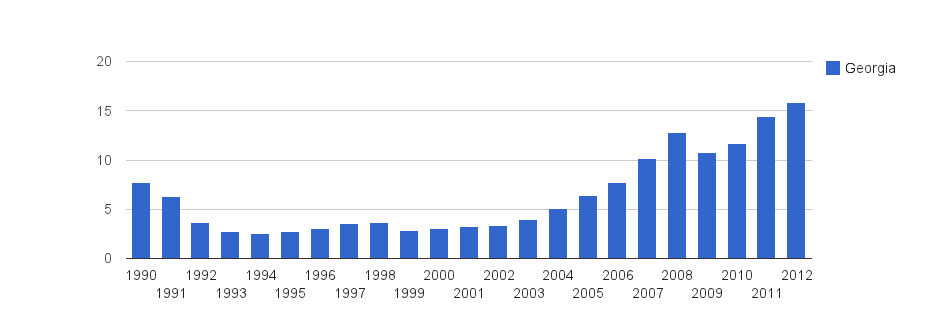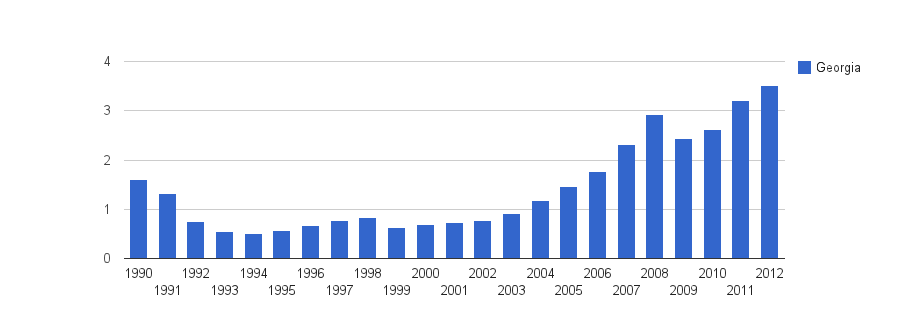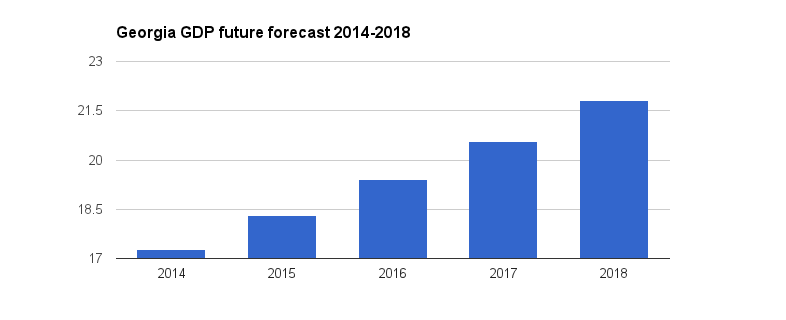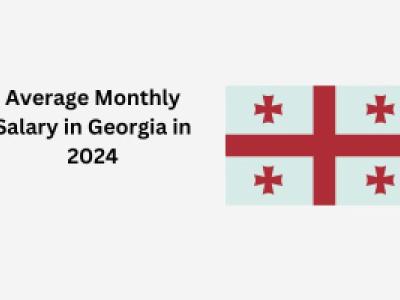Georgia is a country located in the South Caucasus region and has a rich and diverse history. The Georgian economy has gone through its ups and downs in the past few decades, and in this article, we will take a closer look at its historical GDP and project what the future might look like.
To start, let's examine the historical GDP of Georgia by nominal values.

The chart shows that Georgia, like many other former Soviet republics, experienced a decline in its economy in the 1990s. This decline can be attributed to several factors such as the collapse of the Soviet Union in 1991, the war in Abkhazia in 1992-1993, and the Russian economic crisis in 1999.
However, the Georgian economy began to recover in the mid-2000s with the start of the Rose Revolution and the increase in international aid after the 2008 war. The Georgian economy continued to grow at a steady pace from 2010 to 2012.
Next, let's take a look at the historical GDP per capita of Georgia.

The chart shows that Georgia's GDP per capita has gradually increased over the years, reaching its highest point in 2018.
According to the International Monetary Fund (IMF), the Georgian GDP is expected to grow by an average of 6% per year until 2018, reaching a total of approximately 21.81 billion USD. While this growth is possible, it is important to consider factors such as population size and global economic conditions that could potentially impact the future of the Georgian economy.

In conclusion, the future of the Georgian economy looks promising with a projected growth of 6% per year. However, it is important to keep in mind that there are many factors that could potentially impact the country's economic growth.





